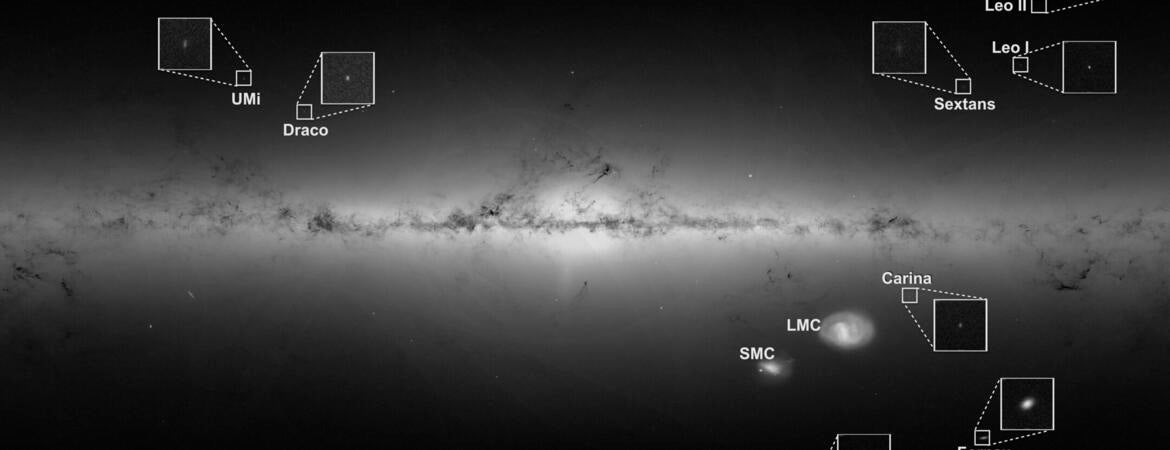
Crater 2, located approximately 380,000 light years from Earth, is one of the largest satellite galaxies of the Milky Way. Extremely cold and with slow-moving stars, Crater 2 has low surface brightness. How this galaxy originated remains unclear.
“Since its discovery in 2016, there have been many attempts to reproduce Crater 2’s unusual properties, but it has proved very challenging,” said Hai-Bo Yu, a professor of physics and astronomy at the University of California, Riverside, whose team now offers an explanation for Crater 2’s origin in a paper published in The Astrophysical Journal Letters.
A satellite galaxy is a smaller galaxy that orbits a larger host galaxy. Dark matter makes up 85% of the universe’s matter, and it can form a spherical structure under the influence of gravity called a dark matter halo. Invisible, the halo permeates and surrounds a galaxy like Crater 2. The fact that Crater 2 is extremely cold indicates its halo has a low density.
Yu explained that Crater 2 evolved in the tidal field of the Milky Way and experienced tidal interactions with the host galaxy, similar to how Earth’s oceans experience tidal forces due to the gravity of the Moon. In theory, the tidal interactions can reduce the density of the dark matter halo.
However, the latest measurements of the orbit of Crater 2 around the Milky Way suggest the strength of the tidal interactions is too weak to lower the satellite galaxy’s dark matter density to be consistent with its measurements — if dark matter is made of cold, collisionless particles, as expected from the prevailing cold dark matter theory, or CDM.
“Another puzzle is how Crater 2 could have a large size, as the tidal interactions would reduce the size when the satellite galaxy evolves in the tidal field of the Milky Way,” Yu said.
Yu and his team invoke a different theory to explain Crater 2’s properties and origin. Called self-interacting dark matter, or SIDM, it can compellingly explain diverse dark matter distributions. It proposes that dark matter particles self-interact through a dark force, strongly colliding with one another close to the center of a galaxy.
“Our work shows that SIDM can explain the unusual properties of Crater 2,” Yu said. “The key mechanism is that dark matter self-interactions thermalize the halo of Crater 2 and produce a shallow density core, that is, the dark matter density is flattened at small radii. In contrast, in a CDM halo, the density would increase sharply toward the center of the galaxy.”
According to Yu, in SIDM, a relatively small strength of tidal interactions, consistent with what can be expected from measurements of Crater 2’s orbit, is sufficient to lower Crater 2’s dark matter density, consistent with observations.
“Importantly, the galaxy size also expands in a SIDM halo, which explains Crater 2’s large size,” Yu said. “Dark matter particles are just more loosely bound in a cored SIDM halo than in a ‘cuspy’ CDM halo. Our work shows that SIDM is better than CDM at explaining how Crater 2 originated.”
Yu was joined in the study by Daneng Yang of UCR, and Xingyu Zhang and Haipeng An of Tsinghua University in China.
Yu’s research was supported by the John Templeton Foundation and the U.S. Department of Energy.
The title of the research paper is “Self-interacting dark matter interpretation of Crater II.”
Header image credit: ESA/Gaia/DPAC




